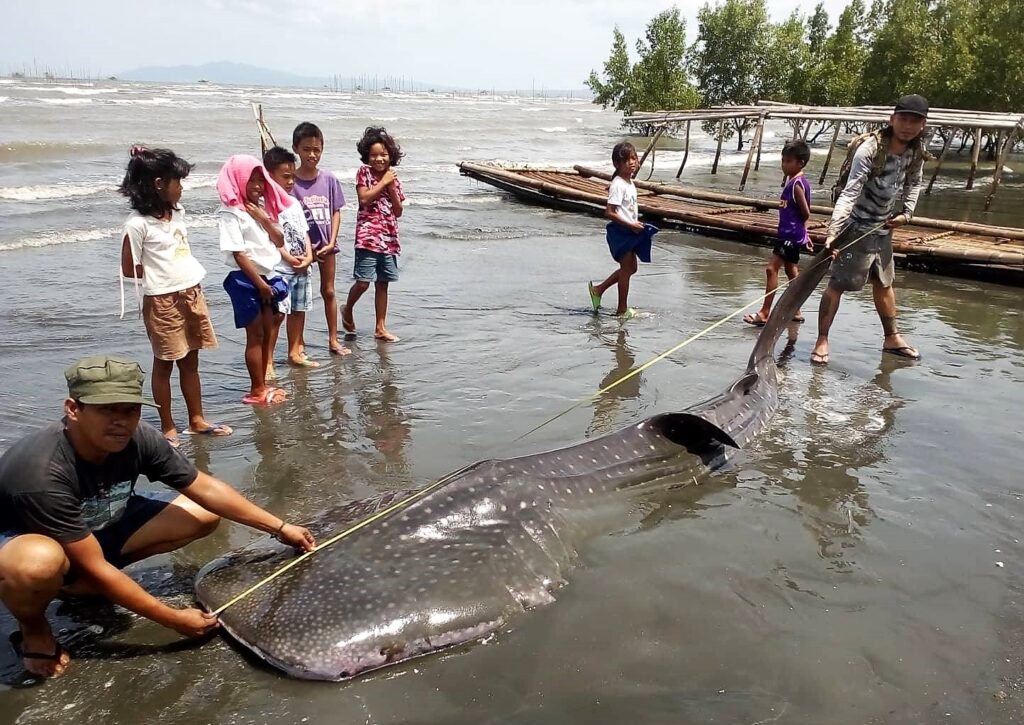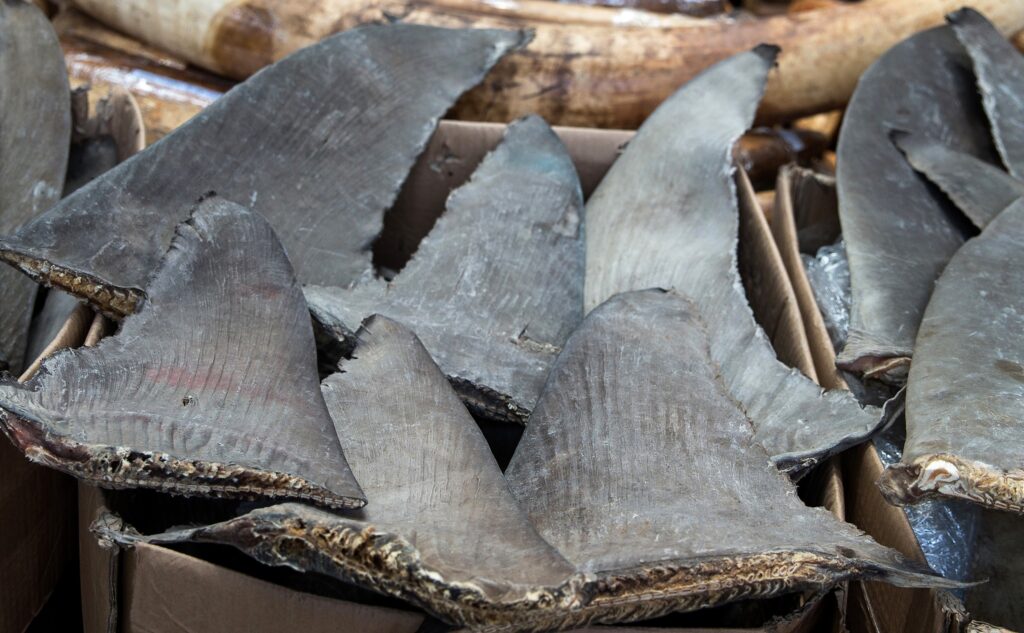Text by Henrylito D. Tacio
Photos by David Choy, Darrell Blatchley, and Jerome Favre
Sharks, rays, and chimeras are collectively referred to as sharks. They are perceived to be scary and ferocious monsters of the sea. This has been the notion since time immemorial. In the 1975 American thriller film Jaws, a man-eating great white shark attacks beachgoers at a summer resort town, prompting police chief Martin Brody (Roy Scheider) to hunt it with the help of a marine biologist (Richard Dreyfuss) and a professional shark hunter (Robert Shaw).
There are over 1,000 shark species around the world. About 200 of these can be found in the Philippines. In terms of shark biodiversity, it ranks fourth after Australia, Indonesia, and Japan and second in Southeast Asia after Indonesia.
Sharks, however, are unfairly viewed as dangerous to human beings. What most people don’t know is that sharks play a functional and important role in the marine ecosystem.
“Their presence is an indicator of a healthy ocean with abundance of prey, including fisheries,” said Dr. Theresa Mundita S. Lim, executive director of the ASEAN Centre for Biodiversity (ACB), in an exclusive interview. “Without them, there will be no early warning signs of impending impacts that could ultimately affect human survival.”
According to Dr. Lim, sharks keep the population of certain species in check, thus keeping the fish stocks robust. In addition, they help in preventing the spread of diseases. “They naturally preyed upon the weakest and the ones in poor health,” she explains.
Oceania, ocean conservation, and advocacy organizations also add: “Through the spatial controls and abundance, sharks indirectly maintain the seagrass and coral reef habitats.” Both coastal ecosystems are needed for fish and other marine creatures to thrive.
Unfortunately, sharks and rays are in serious decline around the world. “Today, 75% of oceanic shark species are at risk of disappearing,” deplores the Marine Wildlife Watch of the Philippines (MWWP).
In the Philippines, the abundance of sharks has declined over the past decades, with more than half of the 39 species now threatened with extinction, according to the International Union for the Conservation of Nature (IUCN).
Previous studies on shark species found at the Tubbataha Reefs Natural Park (TRNP) have recorded the presence of 23 species of sharks and rays. A designated Heritage Park of the Association of Southeast Asian Nations (ASEAN), TRNP covers roughly 10,000 hectares of coral reef at the heart of the Coral Triangle.

Dead whale shark (Photo by Darrel Blatchley) 
Seized dried shark fins and elephant ivory are displayed during a Hong Kong Customs and Excise Department presentation at Kwai Chung Customhouse in Hong Kong, China, 05 September 2018.
This pristine site is home to a high density of marine species, including 700 species of fish, 13 species of dolphins and whales, and over 100 species of waterbirds, according to the official website of the Tubbataha Management Office (TMO).
Tubbataha is one of the last few remaining places in the Philippines where reef sharks thrive, attributed to the strict protection afforded to the park and sufficient area to support the movement of the apex predator.
And for the first time, with the support of the Laguna-based ACB, the TMO is leading a shark survey following studies conducted by Large Marine Vertebrates Research Institute Philippines (LAMAVE) from 2015 to 2017.
Angelique Songco, protected area superintendent and TMO head explained that the shark survey will use the Underwater Visual Survey (UVS) method, a non-invasive and unbiased approach, in which divers swim down current for 40 minutes while identifying and counting passing sharks within an imaginary 30-meter transect strip.
While the UVS has little to no effect on the behavior of sharks, the survey needs to be complemented with other techniques for a better understanding of shark ecology, Songco said.
In a news release, it was said researchers and marine park rangers would conduct the survey with assistance from World Wildlife Fund for Nature (WWF) – Philippines, LAMAVE, and local volunteers.
“The objective is to establish trends over the years and detect changes in shark abundance and species distribution,” Songco said, adding that the information generated from the study will also be used to assess the effectiveness of the park management as sharks are one of its key biophysical indicators.
Dr. Lim said that the shark study, along with lessons learned and further research activities in the park, may feed towards larger stakeholder efforts to enhance shark conservation measures at the national and regional levels.
There are 254 species of sharks and rays in the IUCN Red List of Threatened Species that can be found in the ASEAN, of which 140 are categorized as critically endangered, endangered, and vulnerable.
“We take note of the collaborative efforts among the government, non-government organizations, and academic institutions to fill the knowledge gaps on sharks and other important species in the marine protected area,” Dr. Lim said.
Sharks are the main ingredient for shark fin soup, a prestigious dish among ethnic Chinese both in China and abroad, served at wedding banquets, Lunar New Year celebrations, and high-end restaurants.
“The demand among an expanding middle class in places like Taiwan, Vietnam and Indonesia is driving unsustainable fishing in unmanaged fisheries of less economically developed countries,” WildAid deplored.
An ocean without sharks is much scarier than an ocean without them. “Though potentially dangerous, shark attacks are extremely rare – and humans annually kill from 70 to 100 million sharks yearly for their liver, meat and of course their fins,” deplores Gregg Yan, a conservation advocate and director for communications of Oceana Philippines. “They have far more reason to fear humans than we do them.”
A recent scientific paper published in Marine Policy has proven this. The study, conducted by researchers from the University of Hong Kong, the Sea Around Us initiative at the University of British Columbia, and WildAid, reveals that fishing pressure on threatened shark populations has increased dramatically.
Data from the Sea Around Us shows that the global shark catch has more than doubled to 1.4 million tons in the last six decades, with the overexploitation “threatening almost 60% of shark species, the highest proportion among all vertebrate groups,” said lead author Professor Yvonne Sadovy, of the Swire Institute for Marine Science at the University of Hong Kong.
Over the past several years, dozens of countries around the world have adopted bans on shark fishing. “However, given the prevalence of illegal, unregulated, and unreported fishing, and the fact that most countries still do not ban finning, the practice continues globally,” WildAid said in a press statement.
Faced with challenges such as poor enforcement, accidental catch, inadequate laws, and criminal activity, the researchers call for adopting the precautionary principle and halting the consumption and trade in all shark fins.
Like human beings, sharks are not created equal. “There are different kinds of sharks,” Dr. Lim says. “The carnivorous sharks, like the tiger sharks, great whales, bull sharks, are considered apex predators.”
But there are sharks that don’t eat meat. “The largest sharks are harmless and are plankton-feeders,” Dr. Lim says, referring to whale sharks and megamouths. As apex predators, these large sharks are also good indicators of abundant food supply. “The presence of krills and copepods that these sharks feed on also attract marine species that are considered important to fisheries,” she says.
Aside from ecological benefits, sharks have also been proven to boost local economies through sustainable tourism activities. The most noted shark-based tourism in the country is those in Donsol in Sorsogon and Malapascua Island in Cebu.
“You can (benefit from) live sharks over and over again throughout their lifetime. But once they are dead, you can use them only once and nothing more,” says Dr. Arnel “AA” Yaptinchay, founder and director of MWWP.
In addition, sharks can also be a source of food for those living near the seashores. “In greater numbers, sharks and rays can be part of the diet of coastal communities, as it was in the olden days when they have not yet been overhunted, and the oceans were less polluted,” Dr. Lim says.
Sharks have to be saved from disappearing in the country’s waters. “Protecting sharks in the Philippines is in our best interest,” said Save Sharks Network Philippines in a statement. “Their presence is beneficial to both our economy and ecosystems.” – (Photos by David Choy, Darrell Blatchley, and Jerome Favre)

